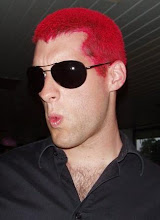7 photographs
Click here to view flickr set.
 The previous two exercises have shown how we can change the contrast of a photograph using hard or soft light and also how we alter the perceived depth of the subject by influencing where the shadows fall with the light direction. Now we look at how to reflect the light from the source in order to fill the shadows to alter the contrast even more.
The previous two exercises have shown how we can change the contrast of a photograph using hard or soft light and also how we alter the perceived depth of the subject by influencing where the shadows fall with the light direction. Now we look at how to reflect the light from the source in order to fill the shadows to alter the contrast even more.The first and second photo follows the softening the light exercise by creating hard and soft shadows, respectively. The third shows how piece on white card, placed approximately one metre away, can reflect some of the light back onto the subject to fill in the shadows cast by the direction of the source. This is in effect reducing the tonal variation of the subject, removing the competition between the shadow and the form. For the fourth, the card was moved closer and the result reduces the tonal variation even more by reflecting more of the light. I have exercised this in the past for a colour accent submission for Assignment 3: a large light source was placed to the left of the subject to soften the shadows and a white card placed opposite to reduce the tonal variation caused by the position of the model’s head.
 The fifth, sixth and seventh photographs for this exercise alter the amount of light reflected again by using the dull and shiny sides of kitchen foil and then crumbled foil, respectively. By comparing the results, we can see that the shiny surface of the foil reflects more light still when compared to the white card.
The fifth, sixth and seventh photographs for this exercise alter the amount of light reflected again by using the dull and shiny sides of kitchen foil and then crumbled foil, respectively. By comparing the results, we can see that the shiny surface of the foil reflects more light still when compared to the white card. The choice of what sort of reflector card to use will be dependant on the amount of fill a subject may require. Furthermore, the colour of the seamless background would also influence the amount of fill required: a brilliant white may mean that no fill would be required at all whereas black may require a much stronger fill.

No comments:
Post a Comment